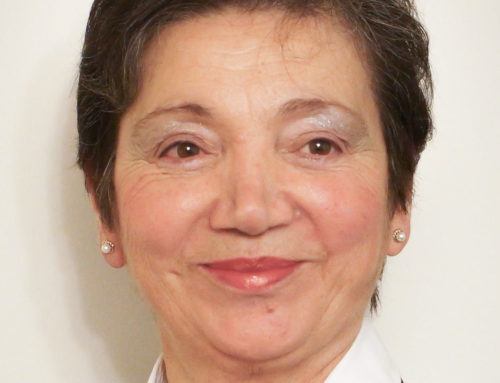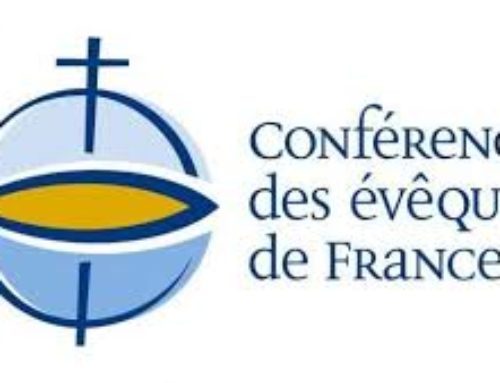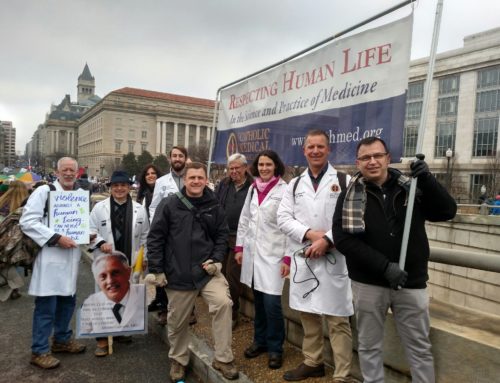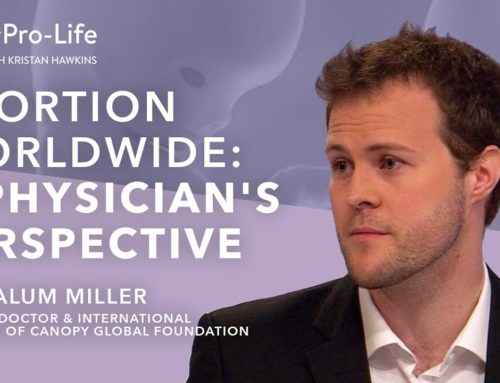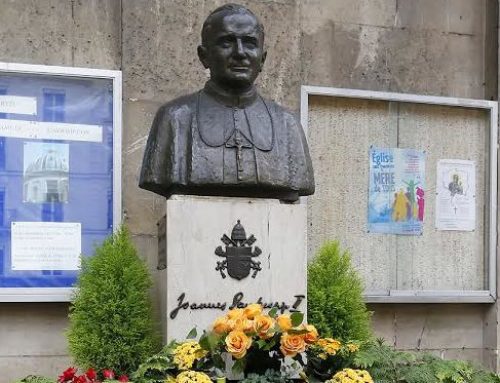3 July 1983
To the Roman Hospital of San Camillo
On Sunday afternoon, 3 July, the Holy Father celebrated a Liturgy of the Word during a visit to the Roman Hospital of San Camillo. After a reading from the Gospel of St. Luke the Holy Father gave the following homily.
1. I am grateful, Mr. President, for the words with which you have welcomed me, conveying the thoughts of the medical personnel and of the vast community of the sick and their families. I am grateful also to you, Reverend Superior General of the Camillians, for the cordial expressions with which you also have greeted me in the name of the men and women religious who work in this hospital, on the occasion of this pastoral visit so significant for me.
I extend an affectionate greeting also to Mons. Fiorenzo Angelini, to the Director, to the chief physicians, the aides, the assistants, to the doctors and the attending students, to the department heads, the nurses, the auxiliary and administrative personnel and to all present. Thank you all for the warm reception which has been reserved for me.
Also my greeting extends with special affection to the sick, whether in San Camillo or in the Carlo Forlanini and Lazaro Spallanzani Hospitals, who have gathered here for this occasion. Looking at you, dear brothers and sisters, my thoughts turn to the sick who could not leave their wards, to those more seriously ill and in danger of death, to the children. In fact, my thoughts at this moment go beyond the walls of San Camillo Hospital and reach out to embrace all people in the hospitals and clinics of Rome, including those who struggle with illness in their homes, supported by the love of the family. With this visit of mine I intend to return the visit of the sick who recently came to St. Peter’s Square for the celebration of the Jubilee.
Also, I wish today’s meeting to be an occasion of wholesome reflection and better yet an important moment in the celebration of the Holy Year of Redemption. We know and we believe that the face of the suffering person is the face of Christ himself. The sick and those who move among them know of this mysterious and precious identification with the Lord, who redeems in suffering and through suffering.
“Medical family” ideal
2. This hospital bears the name of one of the saints who most intensely lived the mystery of Redemption in its daily reality through the cross: St. Camillus de Lellis, whose work began in this very city four centuries ago.
From then until today mankind has made great strides, and in our day places for recuperation and care are no longer islands segregated from the rest of the community, but they represent an identifying aspect of commitment and progress. The social dimension of medical assistance, administered by the public authorities by means of the national health service, while on the one hand has multiplied these places, on the other hand it has made them places of extraordinary and continuous meeting of humanity: the sick, their families and acquaintances, doctors and nurses, auxiliary personnel and volunteers, ever more complex organization and management committees are called to constitute that “medical family” who, involving themselves ever more fully in the social context, must become a place and a measure of our capacity to feel and to live human brotherhood in its fullest expressions.
Who better than the Christian can be open to such an ideal? Is it not perhaps to the Christian that Christ’s word, reported in the Scripture passage heard a little while ago refers? Today, as yesterday and always, the command remains in force: “When you enter a city … cure the sick whom you see and say to them: the reign of God is at hand” (Lk 10 8f). Mindful of this, the Church since its beginning has made itself a promoter of socio-medical assistance, recognizing in its concern for the world of suffering one of the identifying elements of redemptive action, according to the directives of the Lord who came to announce “glad tidings to the poor, to proclaim liberty to captives and to give sight to the blind and release to prisoners, to announce a year of favour from the Lord” (Lk 4:1-19; cf. Is 61:1).
This message was already present in the Lord’s actions, since “Jesus continued his tour of all the towns and villages. He taught in their synagogues, he proclaimed the good news of God’s reign, and he cured every sickness and disease” (Mt 9:35). We must not be surprised that in all ages the disciples of Jesus too have felt the impelling need to translate into action the command that the Divine Master had left to them.
Camillus chose a new school of charity
3. One of these disciples, ready to accept and to practise heroically the Lord’s example, was precisely St. Camilllus de Lellis. After having long experienced in his own body and spirit “the stigmata of Christ” (cf. Gal 6:17), he, by divine inspiration, chose to form, as Benedict XIV said, “a new school of charity” (Benedict XIV, Bill of Canonization, 29 June 1746), instituting the Order and the Camillian family, present today in many parts of the world.
A contemporary of St. Camillus de Lellis tells us that the Saint, at the side of the sick, shared their condition to such a point as to “adore the infirm as the person of the Lord” (cf. P. Sannazzaro, Camillo de Lellis, in “Dizionario degli Istituti de Perfezione”, III, coll. 9-10). Is it not written in the Gospel : “As often as you did it for one of my least brothers, you did it for me” (Mt. 25:40)?
The changed conditions of the times have never lessened the validity of the intuition of St. Camillus, but rather solicit new expressions of it in harmony with the demands of today’s social context. If in fact the progress of civilization lies in the increased possibility to serve man, then the Camillian charism can not but find confirmation and increasing application.
Historical coincidence
4. A unique historical coincidence deserves to be recalled and reflected upon. Camillus de Lellis was born in the Holy Year of 1550, and in the Holy Year of 1575, at the age of twenty-five, he converted from a dissipated life. We meet today in this place, so steeped in the memory of the Camillian spiritual heritage, to celebrate the Holy Year of the Redemption.
Is this not reason enough to ask ourselves if Camillus de Lellis does not have something to tell us about the purpose of this year of grace that we are celebrating? He indeed has a message, and an important message for us. He reminds us that there is a close relationship between spiritual and bodily suffering and the primary end of the Holy Year based on the fundamental obligations of conversion and renewal.
In those who suffer, conversion is a need that touches the roots of existence, restores essential human values, sanctifies the place of suffering, and becomes evangelization. Renewal can then become in the sick the very nucleus of hope, not only for what concerns his health, but often also for the general approach to life, and for the prospects toward which to direct its path. For this very reason there is perhaps no other human “place” better than a hospital in which the terms “conversion” and “renewal” assume a truer and fuller significance, embracing every real human value in the highest synthesis of the Christian view.
From this community and medical family certainly arises a question about life which is not manifest anywhere else: physical and psychic life, individual and social life, life as survival and life as complete creativity, life as one’s integrity and as the capacity to give oneself. Places of recuperation and care are places of life and those who work in these places cannot, must not, forget that they are at the service of life, of all life and of the life of all.
The infirm, and whoever is in need of assistance and care, knows deep down how unthinkable a conversion to the values of existence can be if life, the root and condition of every value, is not defended and affirmed as top priority. Not only this, but just where will the victims of the frailty of the human condition, the victims of calamity, of misfortune, of every form of violence which attacks man and society, end up? The first commandment, directed to those who are responsible for and assigned to medical care, is that of defending and celebrating life from the very first moment of its conception and never consenting to its being destroyed or cut short. In this light is manifested the great significance of the choice made by those who, being dedicated to the service of life, in keeping with their conscience, refuse to cooperate in suppressing it. To all these I wish to attest my esteem and encouragement in this human and Christian obligation.
No man, believer or unbeliever, can refuse to believe in life and to feel the duty to defend it and save it, especially when it does not yet even have a voice to proclaim its rights. If such an awareness and such a consistent message comes from you, sick, doctors, nurses, chaplains, sisters, volunteers, families of the sick, it will become necessarily credible, since it does not mouth empty words but refers to your personal and daily experience. It is putting into words your life of faith in God and in man, and, in short, of your faith in Christ who is at once both God and man.
Prayer is necessary
5. We know, however, and you experience it with a particular realism, that human efforts alone are not sufficient to face such great and demanding tasks. Prayer, the true medicine of body and soul, the channel and bridge of our hope, is necessary. Before Jesus who was healing a man who was pleading for a cure asked the Lord to increase his faith (Mk 9:24). This request of his was a prayer, and perhaps from no place on earth as from places devoted to accepting persons tried by suffering, the request for faith is sincere and spontaneous, essential, and at the same time effective.
Individual, personal and intimate prayer is necessary, but also community and collective prayer, capable of calling together all those who share this service to life even in the diversity of conditions and functions.
My thoughts at this moment turn particularly to Holy Mass, which is so often celebrated in the wards of this hospital. In the Mass Christ becomes present sacramentally, effecting a true communion between the sick and those who work at their side.
The whole history of Christian piety affirms that the prayer which rises above all from the lips of those who suffer has always sought the intercession of the Mother of God, universally invoked as “Health of the sick”. Entrust your plea to Mary that she may present it to God, the Father of goodness and mercy.
May this meeting today, beloved, not remain an isolated moment, even if experienced with deep-felt participation. Urged and sustained by the spirit of the Holy Year of the Redemption, may it signal the beginning of a renewed commitment on the part of the entire medical family, such that there may come from it a message to the “healthy” who must perceive the presence of the sick as a living part of their human and Christian community experience.
No one lives or suffers for himself alone, but the life and suffering of each one belongs to the life and experience of the entire social community, and in an altogether special way belongs to the life of the ecclesial community as a specific vocation.
Dedicated service
May the name of the Saint borne by this hospital, the presence here of the Camillian Fathers, the Ministers of the Sick, the Religious of Charity of Santa Antida Touret and of the Sacred Hearts, the dedication of so many qualified doctors and expert nurses, the Christian commitment of all the active members of this medical establishment, be the guarantee of a continual dedicated and responsible service to the fundamental value of life, which in God has its original source and final destination.
With this wish I affectionately impart my Apostolic Blessing; invoking for everyone an outpouring of abundant heavenly favours to comfort and sustain the desires and hopes that each one holds in his heart.
John Paul II

